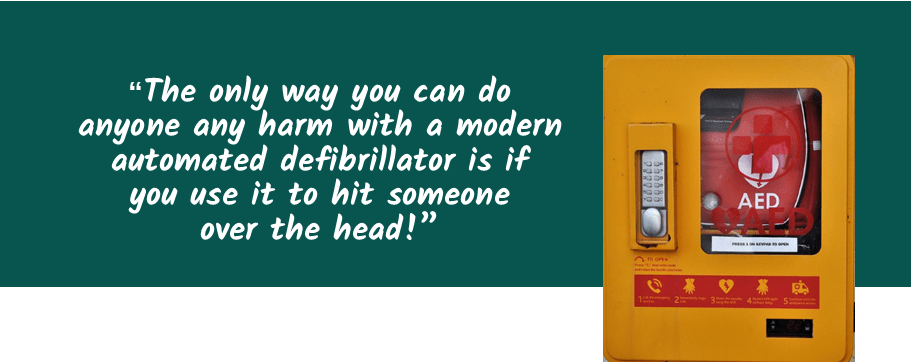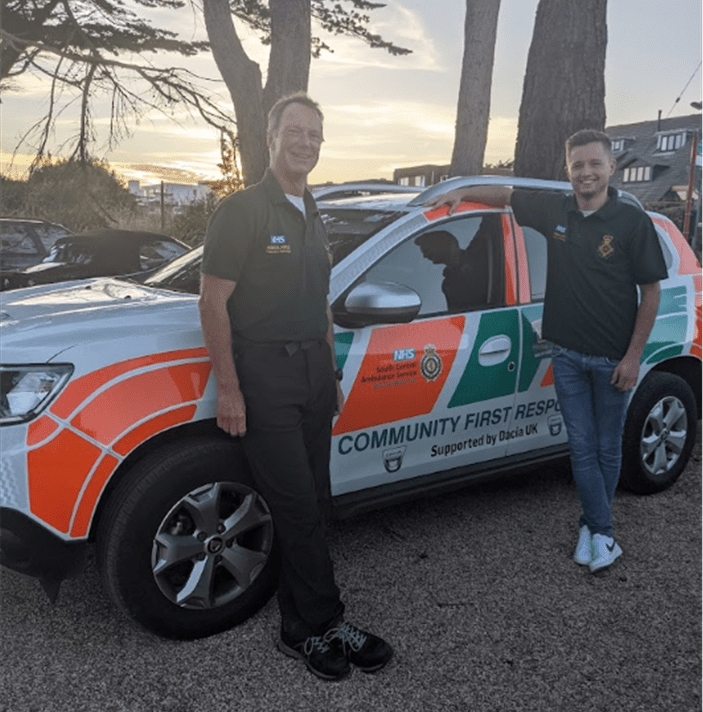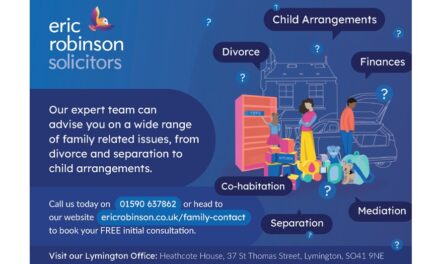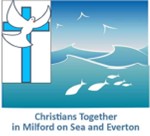
Surprised? These are the frank but also very reassuring words from the renowned cardiologist, Professor Douglas Chamberlain.
AEDs (Automated external defibrillators), are amazing devices that can simply help save the life of someone experiencing a sudden cardiac arrest. They deliver an electric current to shock the heart muscle and enable anyone to provide help, prior to the arrival of the emergency services.
But would you feel confident using one? I met up with some members of the Lymington & Sway Community First Responders team (Steve & James), to dispel some of the myths. I was also left a bit (correction – a lot) in awe of their dedication and passion for the volunteer roles they perform.
Public Access Defibrillators are becoming more commonplace and can be found in a range of places, but James and Steve are aware that often people are not sure if they are allowed to use one. Other commonly asked questions – Can I cause any harm? Do I need to be trained? A lot is a fear of the unknown.
AEDs are actually remarkably intelligent pieces of equipment that have been designed for anyone to use in an emergency situation. The device will talk to you and guide you how to use it, and ultimately decide when a shock is required. Rest assured you can not cause any harm.
No one really knows how they will react in an emergency situation. A range of emotions is commonplace -shock, panic, stress, to simply want to do something, but not sure what the right thing is to do. Steve & James have the benefit of thorough training and years of experience to have the confidence in such cases. They reassured me that when you dial 999, the operator will talk you through exactly what to do, including how to administer CPR if required, and where to ask someone else to fetch a public defibrillator from. However it would serve us all well to familiarise ourselves ahead of such an event should it happen.
· Learn CPR. In Norway children are taught this skill in schools, with this contributing to a higher survival rate for out of hospital cardiac arrests in the country. As Steve noted most people on any given street in Norway know exactly what to do in such an emergency.
· Familiarise yourself with the location of Public Defibrillators. Please see the list here for local sites which is based on registered devices with South Central Ambulance Service (SCAS). Do contact them if you have a device that is available for public use. They have also developed an app; ‘Save a Life’ that is free to download.
Please note AEDs have a code to access the device which the 999 operator will provide .



I mentioned at the beginning my admiration for our local Community First Responders. If you are unfamiliar with this group, here is a bit of detail. Maybe you’d like to join the local team? They are all volunteers so donations are always much appreciated
Who are the Lymington & Sway Community First Responders?
Community First Responders (CFR) are specially trained volunteers working alongside South Central Ambulance Service.
Because CFRs respond to emergencies in the community where they live or work, they can arrive at the scene before an ambulance; so providing life-saving treatment and support to patients in those crucial early minutes of a life threatening emergency such as a cardiac arrest, stroke or breathing problems.
With additional training CFRs are now providing valuable community support for less critical emergencies such as falls and concern for welfare.
How can I volunteer?
All that is required is 20 hours a month of your valuable time, in return you will be provided with the training and uniform to perform the role., So why not get in touch and be a part of something valuable to your community.
Call 01962 898090 or email cfr@scas.nhs.uk for an application pack.

Always remember the first thing to do in any real emergency is to ring 999









